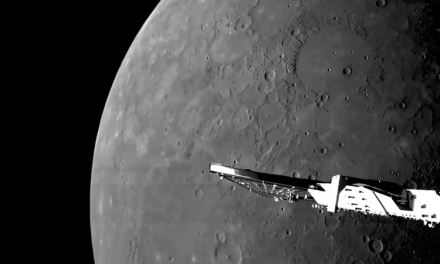It’s a big galaxy out there, and even just looking at the small portion of it we can see, there is a lot of weird stuff in it. Take GJ 367b, for instance.
Scientists have discovered an exoplanet whose year is only 7.7 hours (by Terran reckoning).An exoplanet is any planet outside our solar system. GJ 367b is an USP world (ultra-short period), which takes less than a standard work shift to orbit its sun. GJ 367b prbits 367b a dim red dwarf star, approcimately 32 light-years from our sun.
For comparison purposes, a year on Mercury is 87.97 Earth days. A year on Venus is 224.7 Earth days. A year on Earth is 365 days. A year on Mars is 980 days. A year on Jupiter is just over eleven years. Saturn has a year approximately twenty-nine Earth years long. Uranus has a year just over eighty-four of our years. A year on Neptune is about 164 of our years. Pluto takes just over 247 years to make one orbit around the sun (Pluto is technically a dwarf planet and part of the Kuiper Belt, but I include it for sentiment’s sake). At less than eight hours for its year, GJ 367b is definitely an ULTRA short-period world.
GJ 367b is a rocky world, bout 70% as large as Earth and 55% as massive, making it the lightest known exoplanet discovered thus far. Dr. Kristine Lam of the DLR (the German Aerospce Center explained “By measuring the precise fundamental properties of the USP planet, we can get a glimpse of the system’s formation and evolution history,
Dr. and Lam, Szilárd Csizmadia, aboth ” of the DLR’s Institute of Planetary Research, and their colleagues discovered GJ367b using data gathered by NASA’s Transiting Exoplanet Survey Satellite (TESS), which launched to Earth orbit in April 2018.
GJ 367b is incapable of supporting life as we know it. Life as we don’t know it yet is another matter. Though it is smaller than our own planet, It has a greater density, which suggests an iron core. It is also probably tidally locked, always showing the same face to its host star, with temperatures reaching up to 2,700 degrees Fahrenheit (1,500 degrees Celsius) on its scorching day side.
GJ367b is blasted by stellar radiation, 500 more times than the Earth receives from our sun. If you’re planning a visit, bring lots of sunscreen.
Lots and lots of sunscreen.
-30-
![]()
Susan Macdonald is the author of the children's book "R is for Renaissance Faire", as well as 26 short stories, mostly fantasy in "Alternative Truths", "Swords and Sorceress #30", Swords &Sorceries Vols. 1, 2, & 5, "Cat Tails" "Under Western Stars", and "Knee-High Drummond and the Durango Kid". Her articles have appeared on SCIFI.radio's web site, in The Inquisitr, and in The Millington Star. She enjoys Renaissance Faires (see book above), science fiction conventions, Highland Games, and Native American pow-wows. Her nonfiction book THEY ENDURED will be published by B Cubed Press in 2025 or 2026.












